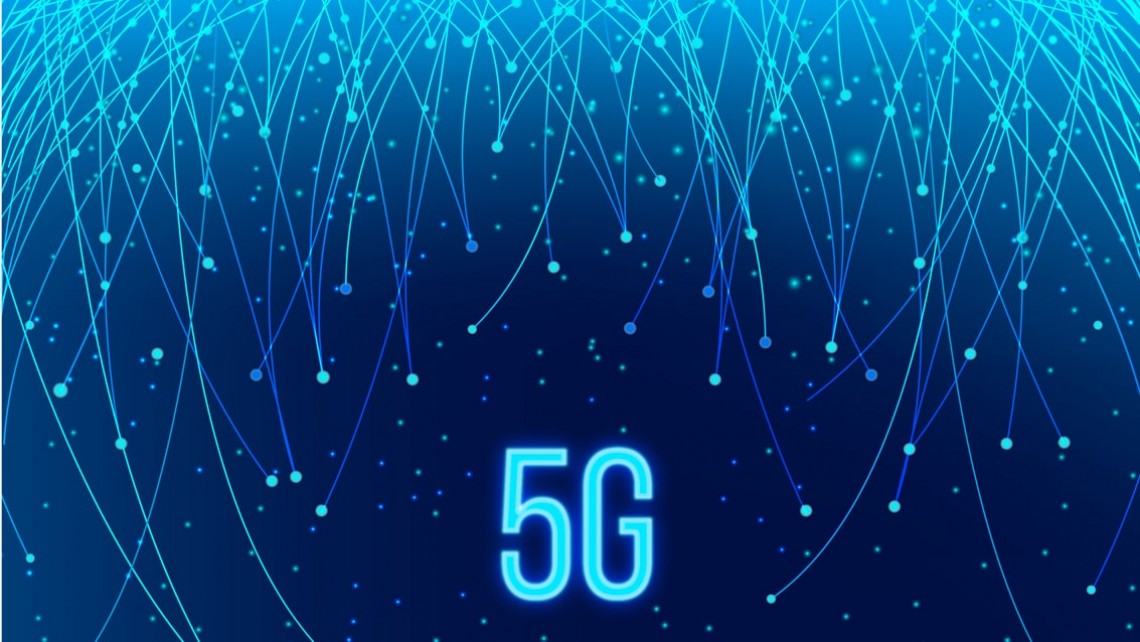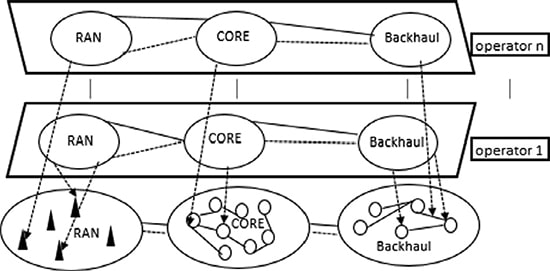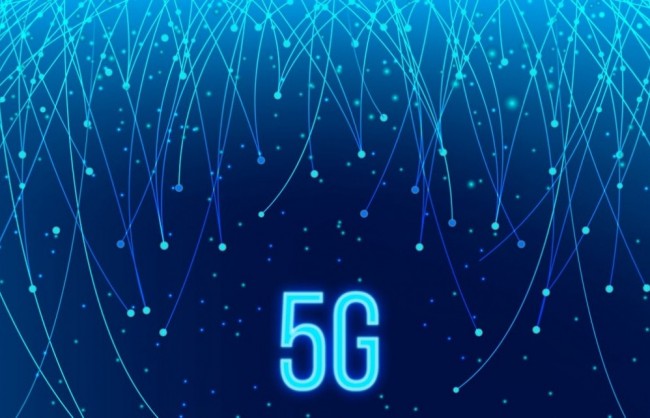
5G mobile technology
All new 5G mobile technology is expected to be operational by 2020. This time, it is therefore crucial to know the direction of research and developments enabling 5G technology. This paper provides an inclusive and comprehensive analysis of recent developmental endeavors toward 5G. It highlights salient features, i.e., flexibility, accessibility, and cloud-based service offerings, those are going to ensure the futuristic mobile communication technology as the dominant protocol for global communication.
5G mobile technology: A survey
1-Introduction
During last two decades, the world has witnessed rapid evolution of cellular communication technologies from the 2G Global System for Mobile (GSM) to the 4G Long Term Evolution-Advanced (LTE-A) system. The main motivation has been the need of more bandwidth and lower latency. While throughput is the actual data transfer rate, latency depends largely on the processing speed of each node data streams traverse through. Together with throughput-related performance enhancements, some allied parameters, such as jitter, inter channel interference, connectivity, scalability, energy-efficiency, and compatibility with legacy networks, are also taken into consideration when developing new mobile technology.
When technology advanced from the 2G GSM to the 3G Universal Mobile Telecommunication System (UMTS), higher network speed and faster download speed allowed real-time video calls. LTE and the subsequent LTE-A offered enhanced network capacity and reduced delay in application–server access, making triple-play traffic (data, voice, and video) access possible wirelessly, anytime anywhere. 4G truly constitutes mobile broadband. Although 3G was the first mobile broadband standard, it was originally designed for voice with some multimedia and data consideration, whereas 2G was intended as the first digital mobile voice communication standard for improved coverage. The data rate has improved from 64 kbps in 2G to 2 Mbps in 3G and 50–100 Mbps in 4G. 5G is expected to enhance not only the data transfer speed of mobile networks but also the scalability, connectivity, and energy efficiency of the network. It is assumed that by 2020, 50 billion devices will be connected to the global IP network, which would appear to present a challenge. In a true “networked society” remote controlled operation of appliances and critical commercial machines over a reliable 5G network will be possible with zero delay. Real-time control of machines by using mobile devices will be possible, making the Internet of things (IoT) more available to all. Finally, but not least important, less energy-hungry network nodes will be required toward a greener world. Therefore, the following are the most important elements in the description of 5G: high throughput, low-latency, high reliability, increased scalability, and energy efficient mobile communication technology.
In this paper, we present a comprehensive study of several approaches for the envisaged 5G technology. The rest of the paper is organized as follows. In Section 2, we describe a few scenarios that 5G will have to satisfy. Section 3 contains literature reviews from different aspects of recent 5G research initiatives. This section contains subsections covering each aspect considered in this study. Section 4 presents our concluding remarks.

2-Futuristic scenarios and 5G compliance
The society of 2020 will be a connected society. The IoT together with intelligent and integrated sensor systems and inhome sensor networks will change the way people lead their lives. “Smart living” people will require constant and ubiquitous mobile connectivity to the network to upload their activity data and IoT control commands, thus generating a “massive reporting” uplink data flow. Massive machine to machine communication and critical machine to machine communication will play pivotal roles in service delivery and industry operations. Vehicular ad-hoc networks (VANETs) are constantly advancing. By 2020, VANETs integrated with cellular networks will be in operation as VANET cloud, leading to a smarter and safer transportation system.
When the number of devices connected to the Internet passes tens or hundreds of billions in the coming decade, the offloading of networked data on unlicensed bands will play a critical role in network load balancing, providing guaranteed bit rate services and a reduction in control signaling. Hence, it is important that 5G will provide seamless compatibility with dense heterogeneous networks to satisfy the high demand of real-time traffic, so that end users will experience smooth connectivity to the network.
3-Developments toward 5G technologies
Many well-known technologies or schemes, such as modulation techniques, radio access techniques, or distributed computing, could be reused in 5G with a few alterations together with many other newly developed and evolved solutions. Hence, we limited our literature review to very recent research papers, white papers, industry products, and market requirements. For example, Cisco Inc. publishes a white paper, the Visual Networking Index (VNI), annually. The Cisco VNI report forecasts global mobile data traffic, and the latest VNI report, published in February, 2015 showed interesting predictions: the monthly global mobile data traffic will pass 24.3 Exabytes (EB), which is ten times the current mobile traffic, by 2019, and the number of devices connected to networks will soon surpass the entire world population.

3.1-Millimeter wave communication
To achieve 1000× speed enhancement, the first step is to use the mm-wave (with a wavelength on the order of millimeters) spectrum (3–300 GHz range) as the carrier frequency together with opportunistic traffic offloading onto an unlicensed spectrum (5 GHz Wi-Fi). The current cellular licensed carrier spans from the saturated 750 MHz to the 2600 MHz spectrum. Hence, the design of the mostly under-utilized physical layers (PHY layers) of the mm-wave spectrum is required. In addition, massive MIMO, beam forming, traffic offloading on to unlicensed spectra and cloudification of radio resources will provide faster data transfer and guaranteed availability. Rappaport et al. showed the propagation behavior, penetration characteristics, and path loss of 28 GHz and 38 GHz carriers resulting from urban structures. The data presented in this paper are certainly useful for designing the PHY layer of 5G deploying the mm-wave. Levanen et al. designed an ultra-low latency mm-wave communication for 5G.
3.2-Architecture
5G will have a well-connected core network and RAN. The backbone network may even shift from fiber to mmwave wireless connectivity, and the interconnected base stations should use high bandwidth wired connections. As the number of connected devices increases, a typical macro-cell may be heavily burdened with controlling overheads to maintain connectivity with a huge number of devices (around 10 k per cell). Therefore, the architecture must be less complex and evolved to accommodate an increased amount of signaling and payload overhead. The performance of such a futuristic 5G architecture, deploying mm-wave RAN, in the Giga KOREA 5G project has been reported. The authors also elucidated graphical representations of the antenna array structures for 3D beam-forming in the report and described how the beam control mechanism facilitates fast handover among different beams. 3D beam-formation is achieved with the help of a 2D array of patch antennae. Highly directive beams of radio transmission signals formed in 3-dimensional spaces, emanating from the 2D array of patch antennae, help to achieve space division multiple access (SDMA). This essentially can be termed beam division multiple access (BDMA). In user equipment, they installed the patch antenna arrays consisting of a 2D NXM number of patch antennae. A quick handoff capability between different beams makes the radio access technique robust, secure, and highly reliable. Moreover, to overcome the limited coverage of mm-wave RAN, “relay” transmission is used and the handoff process may no longer be controlled by the core node but rather by the base station. In 4G LTE, the base station or eNB performs this resource allocation task. Many scheduling algorithms have been proposed for achieving better QoS in LTE. Such an intelligent resource allocation scheme was proposed for cognitive radio links, based on game-theoretic computations. 5G should use this type of optimal distributed resource allocation algorithm in case of macro cell-based operations, where beamforming may not be possible. Not only an increase in the capacity of RAN, but also an evolved core network, which is flexible, intelligent, easy to install, and low cost, are desirable. Moreover, recent development in cloud-based networking has triggered possibilities of virtualized core networks.
3.3-Modulation technique better than OFDM
Spectral efficiency depends mainly on the multiple access technique and modulation scheme used. Orthogonal frequency division multiplexing (OFDM) and orthogonal frequency division multiple access (OFDMA) are used as the modulation scheme and multiple access strategy in LTE-Advanced (4G). OFDMA succeeds code division multiple access (CDMA), which was used in 3G cellular telephony. Further improvements in OFDMA should be able to handle a high peak-toaverage- power ratio (PAPR) and its need of cyclic prefixes (CPs) to prevent inter-block interference. Moreover, OFDM’s applicability on wide band mm-wave with the required hardware setup is not certain. A comparative study of FBMC, universal filtered multi-carrier (UFMC), and OFDM modulation schemes in 5G was presented in. In the FBMC scheme, the subcarriers are subjected to sidelobe suppression by passing them through a filter bank, which makes them capable of delivering higher spectral efficiency than OFDM. FBMC is robust to intrinsic asynchronicity between a transmitter and a receiver. The 5GNOW group is currently considering four waveforms, GFDM, UFMC, FBMC, and BFDM, for 5G to provide an efficient air-interface that is no longer dependent on stringent orthogonality and synchronization requirements. Table 1 gives a brief comparison of the candidate waveforms for 5G from the prototyping and implementation aspects.
3.4-Cloud: RAN-as-a-service
RAN can be viewed as the front-haul network segment. The air interface of 5G will have an interesting feature to carry high definition real-time video to very low bandwidth control signals for the IoT. Although important physical attributes, such as modulation, coding scheme, and a massive MIMO, are a direct part of RAN, this subsection focuses mainly on an emerging revolutionizing field called Cloud-RAN. The entirely new application of cloud services in RAN deployment is the most important anticipated element of 5G. Sabella et al. showed the benefits of RAN-as-a-service (RANaaS) in terms of network sustainability and energy efficiency. The idea behind the cloud-based RANaaS is keeping the RAN capacity in a centralized server and making it available to the customer on demand. To achieve this, the base stations need to be segregated into a radio access unit and baseband unit and a reserve pool of the baseband unit needs to be created to satisfy any cell that experiences high traffic. Low power small cells should be deployed to reduce energy consumption and make the reserved capacity available to the cell that needs it because of a sudden surge in traffic. They have also shown that computational power and energy efficiency will be further optimized with the availability of newer cloud computing platforms and the upcoming data-center servers. Not only the RAN but also the core and backbone network may be virtualized, as schematically shown in Fig. 1, by means of cloud-based resource availability.
3.5-Energy efficiency
Energy consumption is a major factor in the large scale deployment of new networks. Currently, more than 0.5% of the world’s total energy is consumed by the mobile networks.

Therefore, a reduction in energy requirements is one of the major aspects of 5G development not only from the environmental needs but also from the network maintenance perspective. Tombaz and Sung numerically showed that a network densified by cell size reduction has unavoidable network energy requirements. As the network will have a greater number of smaller cells, the major energy consumption component will be the idling and backhauling power. A candidate 5G framework with software defined MAC and network functional virtualization has been deployed. By integrating these solutions, Tombaz and Sung envisage a low latency yet energy efficient 5G network. In their research effort, called the 5GrEEn Project reported in , they agreed with the authors of concerning the logical separation of the control and data planes as a potential solution toward an energy efficient and flexible 5G architecture. The 5GrEEn project aims to introduce an energy-efficient and optimized heterogeneous network (HetNet) architecture for various traffic demands and scenarios to provide improved capacity. Cloud resources should also be allocated sensibly. “Anchor”, a versatile resource management framework in the cloud, has been proposed, implemented, and evaluated.
3.6-Protocol stack
Any communication system performs on the basis of a layered protocol stack. Gohil et al. in their 5G survey, presented the general protocol stack for next-generation end-toend mobile communication. Authors envisaged for a universal communication standard. The noticeable feature of the stack is its provision for compatibility with other open source protocols. They discussed the Open Transport protocol (OTP), which can be downloaded by any user equipment when required. User equipment may be connected to more than one base station (in fact, base stations may belong to different networks).
3.7-3GPP device-to-device proximity services
To increase the cell capacity and offer various proximity services (ProSe) (e.g., bus or cab availability, retail/restaurants’ advertisements in a locality, searching social networks in a large gathering, etc.) D2D connectivity is essential in a cellular system. 3GPP itself has standardized LTE-Direct (LTE-D) in its release-12. LTE-D is a new concept that allows the discoveryof “always-on” devices in a proximity of 500 m in an energy efficient and secured manner by using a licensed spectrum. Although technologies such as Wi-Fi direct or Bluetooth are the P2P proximity communication protocols predominantly in use, they have disadvantages in terms of energy consumption. Hence, LTE-D is standardized and D2D communication in mm-wave is needed for 5G. Mm-wave D2D communication was presented in among capable mobile devices equipped with electronically steerable antennae and beam-forming technology. By virtue of highly directive antennae and beamforming technology, concurrent transmission among D2D users and the base station will not create much interference.
In the case of multimedia file sharing among a number of neighbors, a network can become congested. This type of case needs to be handled by crowd-sensing media retrieval frameworks, such as that proposed and prototyped by Abdelzaher et al. MediaScope, the framework developed specifically for mobile devices, can provide timely retrieval of media files from a cloud. The important feature of this type of file sharing is that the contents are shared after a considerable time. Similarly in 5G, D2D multimedia sharing techniques may borrow this type of framework for sharing large multimedia content among nearby mobile neighbors.
An interesting extension of 5G is the provision of coverage in rural areas, at sea, or in the air routes 35 000 ft above ground level; these needs could be served by a satellite. A research initiative has reduced the latency of the non-GEO satellite constellation and power allocation in multi-beam satellite communication systems for onboard beam-forming. Domme et al. envisaged the feasibility of reusing an FBMC scheme over satellite communication so that the hand-off between a terrestrial cellular infrastructure and satellite coverage becomes easier and seamless.
4-Conclusion
This article provides a comprehensive review of some recent initiatives toward a green, flexible, and mostly dominant 5G mobile communication standard. Important issues, from an improved substitute for OFDMA to energy efficient D2D communication research endeavors, were briefly described. However, there are many issues that could not be presented because of space limitations.
Source: Department of EECS, University of Cincinnati, OH, USA





CEO & Founder Haswell. Data lover, hobby chef, econometrician with strong experiences in the finance industry.